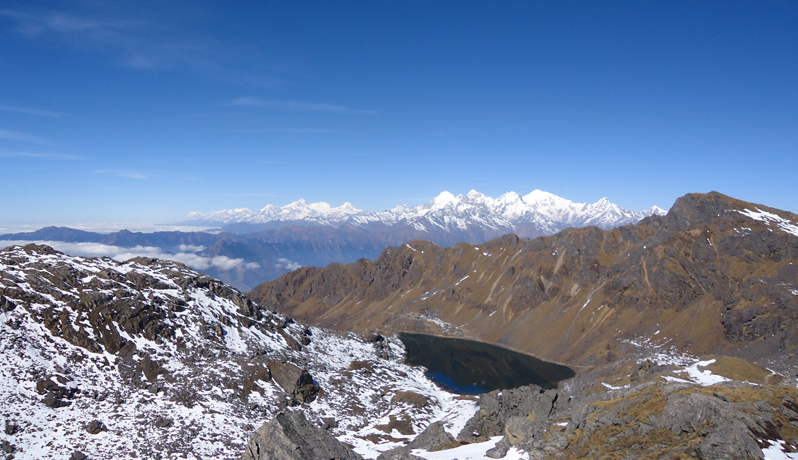Gosaikunda trekking indeed holds significant cultural and spiritual importance for Hindu people, with its sacred lakes believed to possess purifying powers. Each year, numerous pilgrims visit these lakes seeking spiritual solace and cleansing. Moreover, the trek offers a diverse range of landscapes, from subtropical forests to alpine environments, providing a rich tapestry of natural beauty. The journey through this region encompasses encounters with various ethnic groups, including Tamang, Gurung, and Sherpa, whose cultures and lifestyles bear resemblance to Tibetan traditions. This cultural immersion adds depth to the trekking experience, offering insights into the local way of life. The Gosainkunda Trek is a renowned trekking route in Nepal, popular among both local and international trekkers. It offers stunning views of the Himalayas, diverse landscapes, and cultural experiences. Here's an overview of the trek. The Gosainkunda Trek is located in the Langtang region of Nepal, north of Kathmandu, the capital city. The trek usually starts from Dhunche or Syabrubesi, which are accessible by road from Kathmandu. The trek typically takes around 7 days, depending on the itinerary and pace of the trekker. It can be extended or shortened based on individual preferences and time constraints.
The trek offers breathtaking views of the Himalayan peaks including Langtang Lirung, Ganesh Himal, Dorje Lakpa, and others. Encounter with diverse ethnic communities such as Tamangs, Sherpas, and Tibetans, along the way, providing insights into their unique cultures, traditions, and lifestyle. The highlight of the trek is Gosainkunda Lake, a sacred pilgrimage site for Hindus and Buddhists. The lake is believed to have been created by Lord Shiva and is visited by thousands of pilgrims during the full moon festival in August. Passing through lush forests, alpine meadows, and rugged terrain, trekkers get to experience diverse landscapes. Encounter with tea houses and lodges along the route providing accommodation and meals, offering a cozy and warm retreat after a day of trekking. The Gosainkunda Trek is considered to be of moderate difficulty. While it doesn't require technical climbing skills, trekkers should be prepared for steep ascents, descents, and varying trail conditions. Altitude sickness can also be a concern as the highest point of the trek reaches over 4610 meters (15,1124.67 feet). The best time to undertake the Gosainkunda Trek is during the spring (March to May) and autumn (September to November) seasons when the weather is generally clear, offering excellent visibility and comfortable temperatures for trekking. You'll need permits for Langtang National Park, which you can obtain in Kathmandu or Dhunche. The Gosainkunda Trek offers a perfect blend of natural beauty, cultural exploration, and adventure, making it a memorable experience for trekkers seeking to explore the stunning landscapes and rich cultural heritage of Nepal's Langtang region.
Furthermore, the trek presents stunning views of the Himalayan peaks, including Annapurna, Ganesh Himal, and Manaslu, along with picturesque landscapes dotted with waterfalls, streams, and terraced fields where crops like corn, millet, and rice are cultivated. The trek to Gosainkunda Lake is not only a physical journey but also a spiritual and cultural one, allowing travelers to connect with Nepal's natural heritage and immerse themselves in the tranquility of the high Himalayas. It's an experience that leaves a lasting impression, drawing natural enthusiasts and spiritual seekers alike to Nepal time and again, as once is not enough to fully appreciate its beauty and significance.

